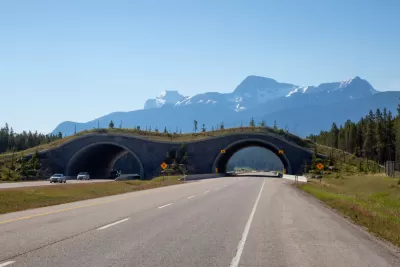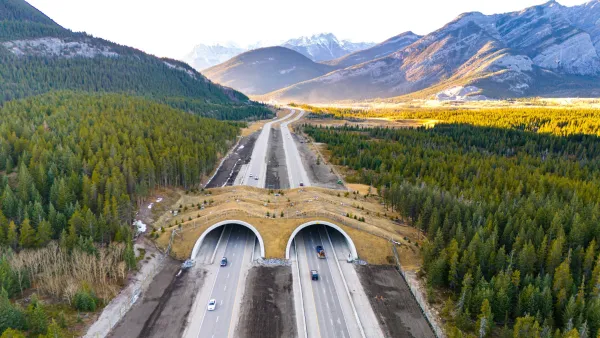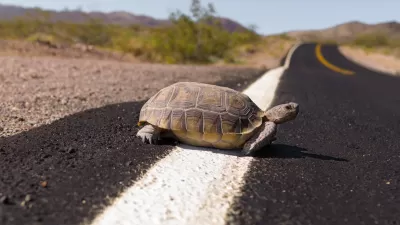If wildlife crossings seem to expensive to build with so many infrastructure needs around the country, consider the cost of not building safe passage for animals.

Motorists kill an estimated one to two million large animals every year in the United States. Starre Vartan writes about a remarkably successful method for preventing those deaths: wildlife under- and overpasses.
"Studies that looked at a cross-section of native species' deaths on highways in Florida, bandicoots and wallabies in Australia, and jaguars in Mexico, just to name a few, all show that wildlife crossings save money and lives, both human and animal," according to Vartan.
Yes, humans die, about 200 every year, when they drive their cars into large animals. And all of these collisions are expensive. "Deer-car collisions cost an average of $8,190, an elk-vehicle collision is about $25,319, and a moose-vehicle collision is $44,546, taking into consideration human injuries and death, towing, vehicle repair, investigation of the accident by local authorities, and carcass disposal, according to a paper from the Western Transportation Institute (WTI) at Montana State University."
Vartan highlights one project in Washington State in particular as an example of how the idea of wildlife overpasses are catching on. The news coverage of the story includes lot of on-scene photography by National Geographic photographer Joe Riis.
FULL STORY: How wildlife bridges over highways make animals—and people—safer

Maui's Vacation Rental Debate Turns Ugly
Verbal attacks, misinformation campaigns and fistfights plague a high-stakes debate to convert thousands of vacation rentals into long-term housing.

Planetizen Federal Action Tracker
A weekly monitor of how Trump’s orders and actions are impacting planners and planning in America.

Chicago’s Ghost Rails
Just beneath the surface of the modern city lie the remnants of its expansive early 20th-century streetcar system.

Bend, Oregon Zoning Reforms Prioritize Small-Scale Housing
The city altered its zoning code to allow multi-family housing and eliminated parking mandates citywide.

Amtrak Cutting Jobs, Funding to High-Speed Rail
The agency plans to cut 10 percent of its workforce and has confirmed it will not fund new high-speed rail projects.

LA Denies Basic Services to Unhoused Residents
The city has repeatedly failed to respond to requests for trash pickup at encampment sites, and eliminated a program that provided mobile showers and toilets.
Urban Design for Planners 1: Software Tools
This six-course series explores essential urban design concepts using open source software and equips planners with the tools they need to participate fully in the urban design process.
Planning for Universal Design
Learn the tools for implementing Universal Design in planning regulations.
planning NEXT
Appalachian Highlands Housing Partners
Mpact (founded as Rail~Volution)
City of Camden Redevelopment Agency
City of Astoria
City of Portland
City of Laramie





























